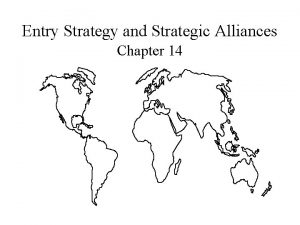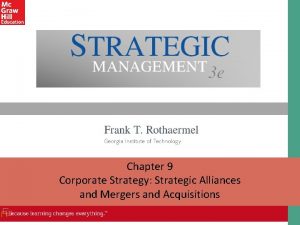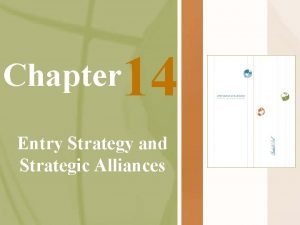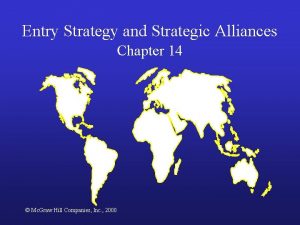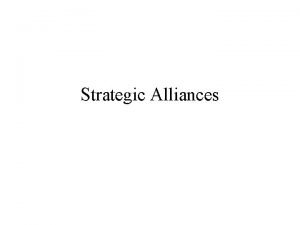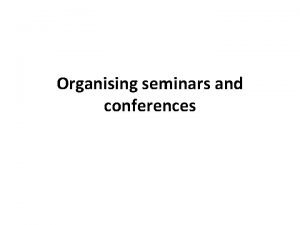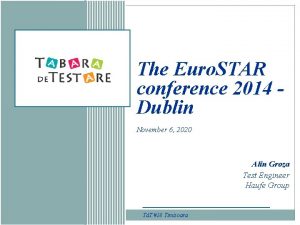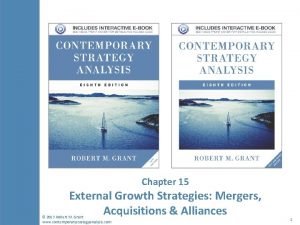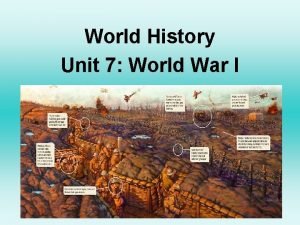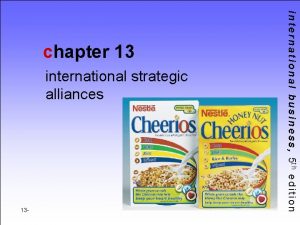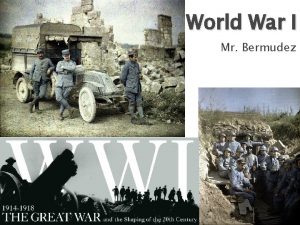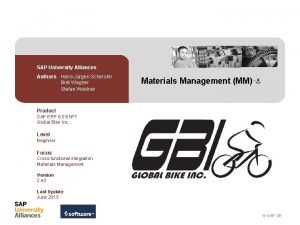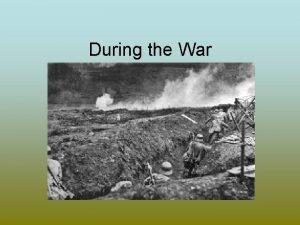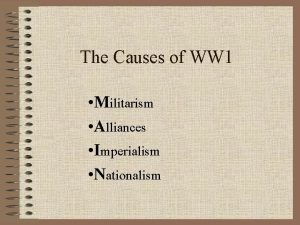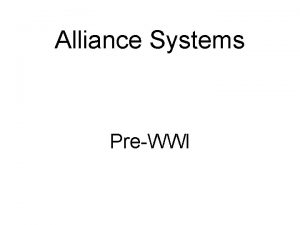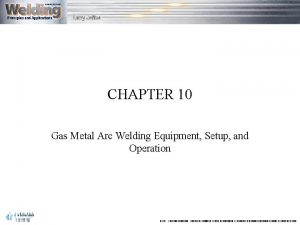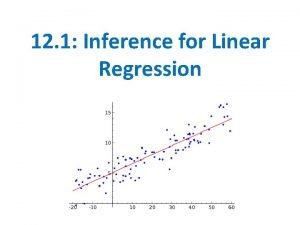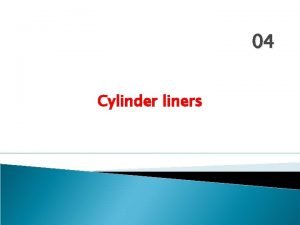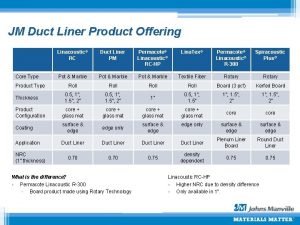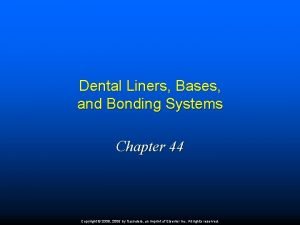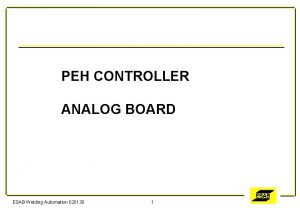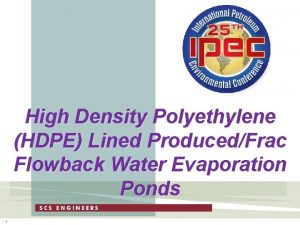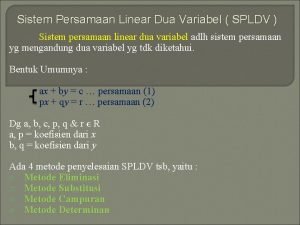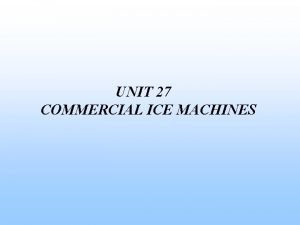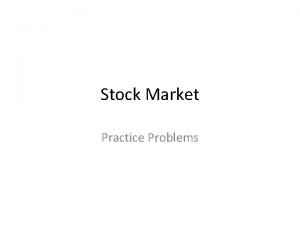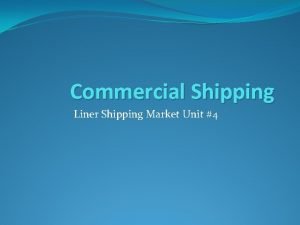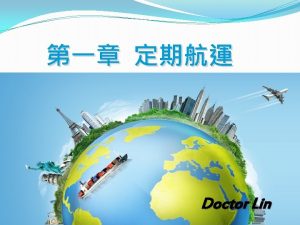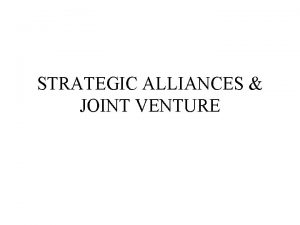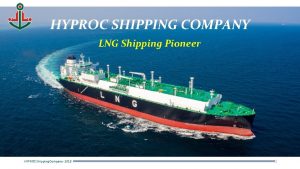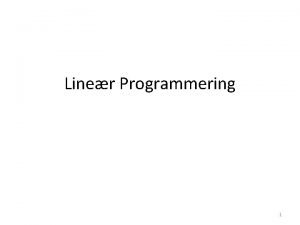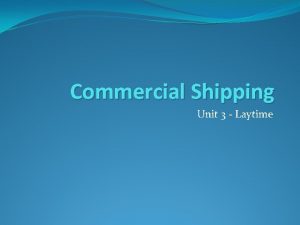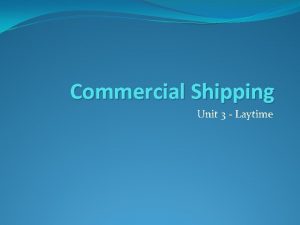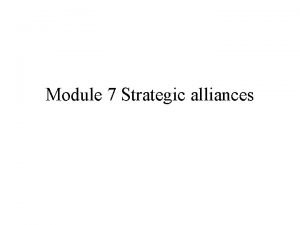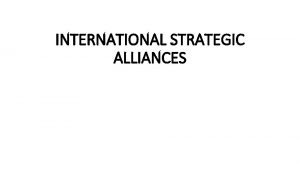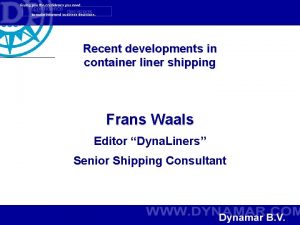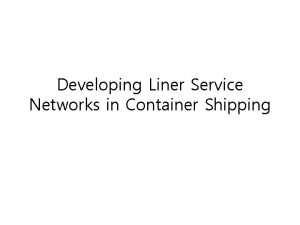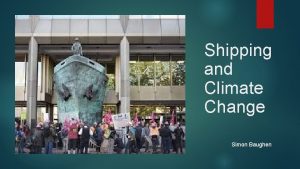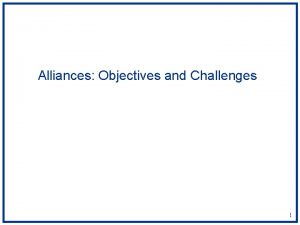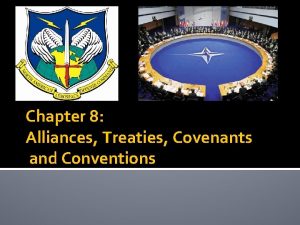Commercial Shipping Liner Conferences and Strategic Alliances Unit


















































- Slides: 50

Commercial Shipping Liner Conferences and Strategic Alliances Unit #7

What is a Liner Conference q The division of international shipping into two lines of work, liner shipping and tramp shipping, has traditionally followed the division of seaborne trade into general and bulk cargo. q The general cargo trade is regarded as the market for the transport services of liner shipping and the bulk cargo flows for that of tramp shipping. q Changes in the organization of supply and demand, in the volume and structure of the cargo flows and in the transport techniques mean that the concepts of liner shipping tramp shipping and general cargo - bulk cargo vary from time to time. 12/22/2021 Presented by : Radcliffe Spence 2

What is a Liner Conference q Shipping is a service industry that generally provides cargo transportation of international trade. q Approximate 90% cargo volume of international is transported by sea. q Often, the shipping industry is categorized into two major sectors: (1) the bulk shipping which provides services mainly in the transportation of raw materials such as crude oil, coal, iron ore, and grains; and (2) the liner shipping which provides services in the transportation of finish and semi-finish products such as computers, manufacturing product and other consumption goods…etc 12/22/2021 Presented by : Radcliffe Spence 3

What is a Liner Conference q. Cargo carried by liner shipping has come to be known as general cargo. q. Liner shipping is to provide regular services between specified ports according to time-tables and prices advertised well in advance. q. The service is, in principle, open to all shippers and in this sense it resembles a public transportation service. q The provision of such a service, often offering regional or global coverage, requires extensive infrastructure in terms of ships, agencies, and equipment. 12/22/2021 Presented by : Radcliffe Spence 4

What is a Liner Conference q The vast majority of liner cargo is containerized –that is, it is carried in sealed metal containers from point of origin to destination. q These containers come in standard sizes (typically 20’, 40’, and 45’ in length) and may include various specialized technologies, such as refrigeration units for chilled and frozen foods, or internal hanger systems for carrying garments. q Containers serve, in essence, as a packing crate and intransit warehouse for virtually every type of general cargo moving in international commerce 12/22/2021 Presented by : Radcliffe Spence 5

What is a Liner Conference q. Most of the world’s non-bulk cargo travels in marine shipping containers. q. Containers move along a network of nodes and links. q. The nodes are physical locations where container movement is interrupted and/or containers are handled. q Many of these concern multimodal transfer points where containers are transferred from one mode to another. 12/22/2021 Presented by : Radcliffe Spence 6

What is a Liner Conference q. The links between nodes are characterized both by a mode of transport (road, rail, inland waterway) and a supporting infrastructure (roadway, canal/river, rail road track, rail marshalling yard, etc. ). q. As containers move along this network they can either be empty, loaded with a single consignment (Full Container Load, FCL) or loaded with multiple consignments (Less-than Container Load, LCL). 12/22/2021 Presented by : Radcliffe Spence 7

What is a Liner Conference q. The Containerized cargo moves from inland point to inland point via a multi-modal network linking vessels, port terminals, trucks and trains. q. At the heart of this service network is the planning, tracking and delivery of cargo and state-of-the-art information systems needed to provide certainty and reliability to shippers. 12/22/2021 Presented by : Radcliffe Spence 8

What is a Liner Conference q. These standardized boxes have revolutionized the international transport of goods involving a sea leg since their first appearance in the 1950 s and have given rise to a multitude of specialized road, barge and rail carriers, a fleet of over 2, 700 cellular container ships and the emergence of a global network of several hundred highly automated port handling facilities. q. Differentiation in the forms of work of the conferences as a consequence of variations in the shipping policy of the governments and the negotiation strength of the consignors. 12/22/2021 Presented by : Radcliffe Spence 9

Making of Liner Conferences q. Liner conferences, a voluntary association of shipowners operating on one route, were established at the end of the 19 th century. q The purpose of these agreements was to: (1) regulate the tonnage supply and freight level on individual routes; (2)limit the competition from nonmember companies and (3) tie the consignors to the conference ships through rebates. 12/22/2021 Presented by : Radcliffe Spence 10

Making of Liner Conferences The conference system introduced four new elements into the working forms of liner shipping. The most important was: 1) Tariffs, i. e. pricing through agreements between the ship-owners participating in the conference. Thus, the traditional price negotiations between individual consignors and ship-owners were abolished. 2) The second element was the geographical division of hinterlands. The member lines were reserved traffic to and from individual ports. Home markets were often allotted the national lines. 12/22/2021 Presented by : Radcliffe Spence 11

Making of Liner Conferences 3) The pool system was the third important innovation. Freight and earning pools were established. The former meant a common sharing of cargo, the latter a common levying of traffic revenues. The aim was to prevent price cuts below the tariff and agreed rebates. 4) The fourth element were the common actions against the competition from nonmembers. q Until 1916 all conferences were organized according to the same principle of a closed and self-regulating association. q The antitrust policy of the United States in 1916 forced the creation of a new type of conference, open for all lines and for state control. 12/22/2021 Presented by : Radcliffe Spence 12

Evolution of Conferences �The result therefore included the: a) Closed conference lines; b) Open conference lines; and c) the independent line operator �There also emerged, a pooling arrangement where profits from the traffic on open ports, were divided in a freight pool between the conference members. 12/22/2021 Presented by : Radcliffe Spence 13

Evolution of Conferences The introduction of the freight pool meant a) further strengthening of the cooperation among the ship-owners; b) mutual control through a detailed supply regulation; and c) a division of net profits, based on agreements and thereby partly independent of carried freights. § The freight pools comprised one or several commodities on one route. § They were formed on routes where the conferences could not prevent wars between the lines. 12/22/2021 Presented by : Radcliffe Spence 14

Evolution of Conferences �The cartel-forming tradition in the liner shipping of the North Atlantic dates back to the l 850's. • In 1851 the British Cunard Co. , the leading company, agreed with the newly established US Mail Steamship Co. (Collins Line) about minimum freight rates. § The companies also formed a freight pool. § When the U. S. Post Office Department in 1858 broke off the subsidies of mail to the Collins Line its continued existence was rendered impossible. 12/22/2021 Presented by : Radcliffe Spence 15

Evolution of Conferences � This was the end of the first attempt to cartelize liner shipping on the North Atlantic. �The rapidly increasing tonnage supply on the route in the 1860's and the increase of the number of shipping companies led to the forming of the world's first trans -ocean line conference. �The North Atlantic conference traffic was a result of successful marketing and government support to limit competition from foreign ships in domestic ports. 12/22/2021 Presented by : Radcliffe Spence 16

Evolution of Conferences �The strong position of the German companies and the establishment of the American shipping trust International Mercantile Marine led to a dissolution of the North Atlantic conference in 1903. � An extensive price war followed. �A noticeable decrease in emigrant traffic, 30 % in 1908 from the year before, led to a stop of the price war. � A new conference was established and included all passenger lines on the North Atlantic and most of the goods traffic. 12/22/2021 Presented by : Radcliffe Spence 17

Evolution of Conferences �In connection with this the AA-agreement was introduced, whose purpose was to divide in detail the shares of passenger and goods traffic between the conference members. �This regulation was contrary to the spirit of the U. S. antitrust legislation which led to an investigation by the House of Representatives of the activity of the conferences and their negative influence on free competition. � The investigation led to new legislation, the Maritime Act of 1916. 12/22/2021 Presented by : Radcliffe Spence 18

Evolution of Conferences �This law became the basis of the American shipping policy and attitude to shipping conferences. • It brought on federal control of liner shipping on the United States. �It prohibited "deferred rebates", the use of low price ships for fighting competition, discrimination of disloyal dischargers, use of discriminating contracts, and preventions for entering the conference. • The legislation forced a new type of open liner conferences that were subject to public observation. 12/22/2021 Presented by : Radcliffe Spence 19

Evolution of Conferences �In the 1920's these new conferences introduced a system of double freight rates in an attempt to reinforce the rebate system. �They also tried to develop secondary competitive obstacles for non-member tonnage, primarily through secret deals with port authorities about priority for conference tonnage and differentiated range additions for further transports in Europe. �The Merchant Marine Act of 1936 prohibited such practices. 12/22/2021 Presented by : Radcliffe Spence 20

Evolution of Conferences �From 1880 up to the First World War self regulating, closed conferences developed on all Europe routes. • The self-regulating conference won the greatest power on routes where consignors were small and scattered over several countries, e. g. the Far East or West Africa. �On routes, where one country's consignors dominated and were supported by local governments as part of their export promotion policy, the negotiating strength of the conference was balanced by shippers' associations and by the active shipping policy of the governments. 12/22/2021 Presented by : Radcliffe Spence 21

Evolution of Conferences �The American shipping policy created new conference forms with public regulation and better possibilities for non-members to compete. � This policy stimulated the interest of other governments, primarily in South America, Australia, New Zeeland South Africa, to seek greater control over liner shipping in their own ports in the 1910's and 1920's. � In spite of all measures to limit competition the conferences seemed to be indispensable for the existence of liner shipping. They created stability in the relations between consignors and lines. �This guaranteed the continuity of services and allowed for investments in new tonnage and handling techniques. 12/22/2021 Presented by : Radcliffe Spence 22

Evolution of Conferences �In the long-run these investments should be useful also to the consignors as the price and time of transport decreased while the quality increased. �However, the conferences could only partly eliminate competition between the shipping companies. � Open price-wars were replaced by negotiations within the conference where the negotiating strength of individual companies determined the division of cargo and level of prices. 12/22/2021 Presented by : Radcliffe Spence 23

Evolution of Conferences �A close cooperation in the form of freight-pools became necessary on routes with a permanent tonnage surplus in order to prevent destructive competition that would in the long-run render line traffic on the route impossible. • To stabilize the demand even more, the conferences introduced deferred rebates and thereby strengthened the loyalty of cargo owners. 12/22/2021 Presented by : Radcliffe Spence 24

Technical Development �The technical development in shipping in the period 1870 to 1948 was characterized by three tendencies: (1) ship specialization which created segmentation of the markets and led to the development of transport systems; (2) increased ship size; and (3) increased speed and productivity. These technical developments lead to what is referred to as unitization, mechanization, containerization and cellular container ships. 12/22/2021 Presented by : Radcliffe Spence 25

Consortia �Co-operative ventures in container shipping began with the formation of consortia in the late 1960 s and 1970 s in order to raise the capital required to mount container services. �However, the services provided by these consortia were marketed collectively, restricting the ability of member lines to differentiate their product. � Strategic alliances of the late 1980 s and 1990 s differ from the early consortia so far as the geographical scope of their operations and marketing practices are concerned. � Whilst consortia of the 1970 s operated in a single trade, alliances of the 1980 s and 1990 s are global in scope. 12/22/2021 Presented by : Radcliffe Spence 26

Strategic Alliances �Strategic alliances have been formed in order to extend economies of scale, scope and network, through strategies such as the integrating of individual service networks, vessel sharing, slot-chartering, joint ownership and/or utilization of equipment and terminals and similar endeavors on better harmonization of operations. �Liner carrier alliances are developing at least two different types: �(1) core alliances with a set of global partners, �(2) multi-consortia networks of slot exchanges covering individual traders. 12/22/2021 Presented by : Radcliffe Spence 27

Strategic Alliances �Through this kind of global alliance arrangement, a lot of scale benefits can be achieved: more frequent service, shorter transit times, wider port coverage, lower slot costs and a stronger bargaining position in negotiating with terminal operators, container depots and inland/feeder transportation carriers. � Liner alliances operational cooperation are summarized as follows: �(1)Joint terminals or terminal contracts; � (2)Joint mainline services; 12/22/2021 Presented by : Radcliffe Spence 28

Strategic Alliances (3)Joint feeder services; (4)Joint purchase or ownership of ships; (5)Joint purchase and usage of containers; (6)Joint intermodal, rail or trucking operations; (7) Joint container depots, (8)Jointly-managed pools of containers and equipments; (9)Joint EDI systems; (10)Joint bunker purchase; and (11)Interchange of empty containers 12/22/2021 Presented by : Radcliffe Spence 29

Strategic Alliances �Alliances, acquisitions and mergers have been seen as elements of an industry-wide strategy to return to profitability via cost cutting and rationalization. �While intense competition and low profitability have encouraged rationalization, the preferred method of achieving the objective has changed over time. • Strategic alliances were preferred in the late 1980 s and early 1990 s, culminating in the formation of the Grand Global Alliance. • More recently the emphasis has switched to merger and acquisition. 12/22/2021 Presented by : Radcliffe Spence 30

Strategic Alliances �Thus, Hapag-Lloyd, NOL, NYK and P&O formed the so-called ‘Grand Alliance’ in 1995 to operate services in both the Europe-Asia and Asia-North America trades. �APL, MISC, Mitsui-OSK, Nedlloyd and OOCL responded by forming the short-lived ‘Global Alliance’; �While Maersk and Sea-Land created a global operating network featuring vessel-sharing agreements in the Europe-Asia, trans-Atlantic, trans. Pacific and intra-Asian trades. � Note also that today’s alliances leave marketing in the 12/22/2021 Presented by : Radcliffe Spence 31 hands of individual member lines.

Strategic Alliances �Mergers Supersede Alliances. To achieve the desired scale economies, liner shipping companies have begun forming global alliances since the beginning of the 1990 s. �These have been less stable than initially expected because members of different alliances have merged, forcing the alliances to adjust their schedules. �This instability prevents alliances from making long-term investments, especially in land-based activities. �As a consequence, the full cost saving potential cannot be realized, which in turn reduces the willingness of carriers to make long term commitments. 12/22/2021 Presented by : Radcliffe Spence 32

Strategic Alliances �Mergers and acquisitions have resulted in some very large liner shipping companies; the �top 20 carriers now control more than half of the world's container slot capacity. Since the �beginning of the 1990 s, liner companies have begun to form global alliances; the largest 10 �groupings now control about two-thirds of the world's container slot capacity 12/22/2021 Presented by : Radcliffe Spence 33

Emerging developments • Technological developments in ship design and construction, and the ensuing economies of scale of larger ships, have also promoted trade, particularly that of developing nations, by making economical the transportation of goods over long distances. • Nowadays, containers are increasingly carried by specialized container ships many of which are able to carry more than 5000 TEUs, while shipyard orders for 18000 are increasing. 12/22/2021 Presented by : Radcliffe Spence 34

Emerging developments �Intense competition and economies of vessel size lie behind recent increases in the size of container ships. �Economies of vessel size arise from the technical characteristics of container shipping: 1) The capital cost per container slot falls as vessel size increases, 2) while the ratio of crew to carrying capacity; and 3) the consumption of fuel per unit of cargo carried also decline as vessel size increases. 12/22/2021 Presented by : Radcliffe Spence 35

Service Routes �Currently, shipping lines operate three general types of deep-sea itineraries: end to end, pendulum and round the world service routes, which are. I. End to end services schedule vessels back and forth between two continents. II. Pendulum services schedule vessels back and forth between three continents with one of these continents as a fulcrum, with the points at either end of the pendulum swing linked only through the fulcrum. This 12/22/2021 Presented by : Radcliffe Spence 36

Service Routes �This type of service offers a way to fill container slots four times on the same voyage and to eliminate certain overlapping port calls in the fulcrum area. �The merging of separate end-to-end services into a pendulum or round the world service serves the two main purposes of broadening the range of through services and reducing the number of ships required to provide the same coverage. �This gives a major cost saving by merging the previously duplicated port calls in the central region of the pendulum. 12/22/2021 Presented by : Radcliffe Spence 37

Service Routes �Also round the world services can overcome the problems of end-to-end operations, by accommodating the needs of global corporations. �Intense competition in container markets not only makes it necessary for ship owners to offer high quality services between major trading regions but also makes it imperative for them to optimize fleet utilization. � Such pressures have led to the development of multiroute operating patterns, notably ‘Round-the-World’ and ‘Pendulum’ services, enabling carriers to maximize vessel employment and slot utilization. 12/22/2021 Presented by : Radcliffe Spence 38

Service Routes �Since vessels employed on ‘Pendulum’ services, unlike those employed in RTW services, are not required to transit the Panama Canal, post-Panamax vessels may be used. � The number of multi-string services expanded greatly during the 1990 s. � Owners offering multi-string services broaden the scope for direct calls by operating a number of strings stand-alone services with dedicated vessels each of which offers different port calls and/or a different port rotation. 12/22/2021 Presented by : Radcliffe Spence 39

Service Routes �There is a tendency for vessels employed in each string of a multi-string operation to call at common or ‘core’ ports Singapore, Hong Kong, Oakland Long Beach in the case of the trans-Pacific trade as well as a range of ‘non-core’ ports. �Non-core ports may be served by only one string of a multi-string service. �Containers consigned to and from non-core ports are transshipped at core ports. 12/22/2021 Presented by : Radcliffe Spence 40

Container Ports Network �Container lines have sought to minimize costs by limiting the number of port calls. � In so doing they have re-emphasized the importance of regional hub ports, notably Singapore and Hong Kong. �Cargo to and from the region served by a hub port is handled by feeder shipping and/or by land transport. � In archipelagic South East Asia, an extensive network of regional feeder services has evolved. �The emerging pattern of mainline and feeder services is analogous with the `hub-and-spoke' system. 12/22/2021 Presented by : Radcliffe Spence 41

Container Ports Network �The feeder networks based on major hub ports are expanding geographically. �Economic forces appear to be favoring the emergence of ‘super-hubs’: the changing pattern of port calls by vessels in the Europe-Far East trade suggesting that Singapore, Hong Kong and Tokyo are strengthening their competitive position vis-a-vis other hubs in East Asia. 12/22/2021 Presented by : Radcliffe Spence 42

Container Ports Network �Frequent changes in the pattern of mainline and feeder services suggest that the system is still evolving; that the economic forces driving change have not as yet been fully accommodated. �Rapidly changing trade patterns, especially in East and South East Asia, add to this instability. �Hence we would expect to see further modifications to the pattern of mainline and feeder services, as well as changes in the absolute and relative status of regional ports, over the next decade 12/22/2021 Presented by : Radcliffe Spence 43

Container Ports Network �A likely long-term future scenario implies the use of container ships with 8, 000 -18, 000 TEU capacity on the major east-west routes, calling at just four or five mega hubs, i. e. only one or two on each continent. �These mega hubs will be almost entirely based on transshipped cargo, implying various levels of regional and sub-regional transshipment centers. �Containers are increasingly transshipped, and hub ports that provide transshipment services have experienced particularly high growth rates. 12/22/2021 Presented by : Radcliffe Spence 44

Container Ports Network �Arguably, such intense competition stems from: �The cost characteristics of container shipping, especially the high level of fixed costs; �The ease and efficiency with which containers can be transshipped, enabling shippers to route containers via a number of paths through a dense transport network. �The intense competition felt in all major Northern Hemisphere container shipping trades in the 1990 s and 2000 s forced shipping companies to adopt innovative, productivity enhancing and cost-cutting strategies. 12/22/2021 Presented by : Radcliffe Spence 45

Container Ports Network These include: �Employing larger vessels on routes where cargo volumes permit, especially in mainline East-West Northern Hemisphere trades; �Developing new service patterns, including ‘Round the World’, ‘Pendulum’, and ‘multi-string’ services; �Reducing the number of port calls, leading to the growth of regional ‘hub’ ports; and �Developing a network of feeder services linking hub and regional ports. 12/22/2021 Presented by : Radcliffe Spence 46

Mega Trends 1) More large containerships to be deployed to main trade routes; 2) More large containerships to be deployed to main trade routes; 3) High fixed costs and freight variable costs; 4) Undifferentiated services; 5) Price wars and destructive competition; 12/22/2021 Presented by : Radcliffe Spence 47

Streamlining Terminal Operations �Port industry has invested a lot in order to cope with the technological requirements of containerization. � Modern container terminals equipped more efficient quay cranes have been built, and more efficient organizational forms including privatization have been adopted in an effort to speed up port operations. �Operational practices have been streamlined, the element of uncertainty in cargo flows largely removed, forward planning has been facilitated, port labor regularized and customs procedures simplified. � These developments took place under the firm understanding of governments and local authorities that ports now constitute the most important link and node in the overall door-to-door transport chain. 12/22/2021 Presented by : Radcliffe Spence 48

Hub & Spoke Operations �Capital intensity and large ships in this industry obliges container ships to limit their ports of call at each end to some of hub ports such as Singapore, Hong Kong, and Rotterdam, from where a great deal of containers are further transshipped with feeders to regional and local ports. � A complex hub-and-spoke networks have thus developed, thus fine-tuning and optimization of service network and schedules have been demanding by carriers. 12/22/2021 Presented by : Radcliffe Spence 49

Strategic Alliances �Regularity and frequency of service, the two imperatives of liner shipping, combined with deploying very large container ships, can easily lead to low capacity utilization for independent carriers. �Therefore, strategic alliances have formed in order to extend economies of scale, scope and network, through strategies such as the integrating of individual service networks, vessel sharing (i. e. joint fleet), slot-chartering, joint ownership and/or utilization of equipment and terminals and similar endeavors on better harmonization of operations. �Alliances are also coalitions of carriers, but contrary to the route-based character and price-setting objectives of conferences, alliances aimed at rationalizing operations, rather than involving in price-setting strategies. 12/22/2021 Presented by : Radcliffe Spence 50
 Liner trade and tramp trade
Liner trade and tramp trade Entry strategy and strategic alliances
Entry strategy and strategic alliances Non equity alliance
Non equity alliance Large-scale strategic commitments may
Large-scale strategic commitments may Strategy
Strategy Motivation for strategic alliances
Motivation for strategic alliances Noncommercial food service
Noncommercial food service Components of mice industry
Components of mice industry Organising a seminar
Organising a seminar As a result of the yalta and potsdam conferences, ________.
As a result of the yalta and potsdam conferences, ________. Star conferences inc
Star conferences inc Round table conferences 1930-32
Round table conferences 1930-32 Alliances and acquisitions
Alliances and acquisitions Infected vs affected dentin
Infected vs affected dentin Classification of bases in dentistry
Classification of bases in dentistry Imperialism 1900
Imperialism 1900 Triple entente countries in world war 1
Triple entente countries in world war 1 Types of functional alliances
Types of functional alliances Doctrines et alliances
Doctrines et alliances Who was in wwi
Who was in wwi How did genghis khan succeed as a conqueror
How did genghis khan succeed as a conqueror Esco
Esco Sap material master data
Sap material master data Ww1 alliances cartoon
Ww1 alliances cartoon Militarism alliances imperialism nationalism
Militarism alliances imperialism nationalism Metternichian
Metternichian Strategic substitutes and strategic complements
Strategic substitutes and strategic complements Io model strategic management
Io model strategic management Strategy analysis and choice largely involves making
Strategy analysis and choice largely involves making Texel industries limited kheda
Texel industries limited kheda How is the amperage adjusted on a gma welder?
How is the amperage adjusted on a gma welder? Name of test
Name of test Cylinder liner design
Cylinder liner design Frac pit liners
Frac pit liners Armacell duct liner
Armacell duct liner An example of an enamel bonding procedure is
An example of an enamel bonding procedure is Polyurea geotextile liner
Polyurea geotextile liner Non linear storytelling
Non linear storytelling Hdpe liner
Hdpe liner Controller
Controller Frac pond liner
Frac pond liner Calendering process diagram
Calendering process diagram Soft liner composition
Soft liner composition Rumus persamaan linear
Rumus persamaan linear Pertidaksamaan linear satu variabel
Pertidaksamaan linear satu variabel Strategic fit vs strategic intent
Strategic fit vs strategic intent Unit 27 hvac
Unit 27 hvac Unit 10, unit 10 review tests, unit 10 general test
Unit 10, unit 10 review tests, unit 10 general test Stock market vocabulary worksheet
Stock market vocabulary worksheet Ford logistics and supply chain management
Ford logistics and supply chain management Unlv controller's office
Unlv controller's office

